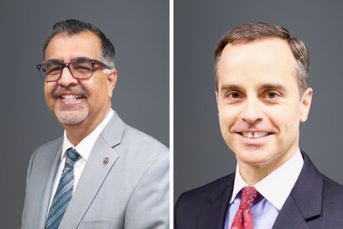How does the work and pay picture look for financial professionals?

Data from College for Financial Planning reveal views on compensation, career development, and workforce challenges.
The College for Financial Planning has just shared a valuable snapshot of the landscape of employment and compensation for financial professionals across the US.
Among the plethora of insights of its broad-ranging 2024 financial planning trends survey – which took responses from CFP certificants and its graduates – the college found a significant 89.6% majority were employed by financial services firms, while the rest were self-employed.
Among those employed, there was a nearly even split between small wealth firms with a field force of 1 to 150 advisors (46 percent) and larger institutions with 500 or more advisors (47 percent). Only 7 percent of respondents said their firm had 151 to 499 advisors.
Only 15 percent of the respondents reported having supervisory or managerial responsibilities. A significant majority said they did more client-facing work including asset management (77 percent) and financial plan creation (90 percent). Excluding those who don’t manage any assets, half of the respondents (50 percent) said they had less than $60 million in AUM, including 38 percent who managed less than $40 million.
Just over half of the respondents (52 percent) said they have a mixed compensation model that combines fees and commissions, while 42 percent are compensated through fees only, and a small percentage (5 percent) rely solely on commissions.
The survey also looked into financial practitioners’ most-wanted areas of career development. Marketing and client communication emerged as the top priority, cited by 8 percent of respondents, followed by financial education and training programs offered by employers (79 percent) and stackable credential programs (69 percent).
Three-quarters of the financial professionals polled said their company supports them with financial education and training, with 50 percent saying they’ve gained deeper technical knowledge and 43 percent developing soft skills as a result. Among the respondents who get training and education, 74 percent said they were satisfied with their firm’s programs.
When it comes to workforce challenges, 37 percent of respondents agreed helping employees achieve career satisfaction was the most difficult. An almost equal number cited recruitment (29 percent) and employee engagement (27 percent), while a fifth (20 percent) saw retaining employees as an urgent priority.
Learn more about reprints and licensing for this article.








